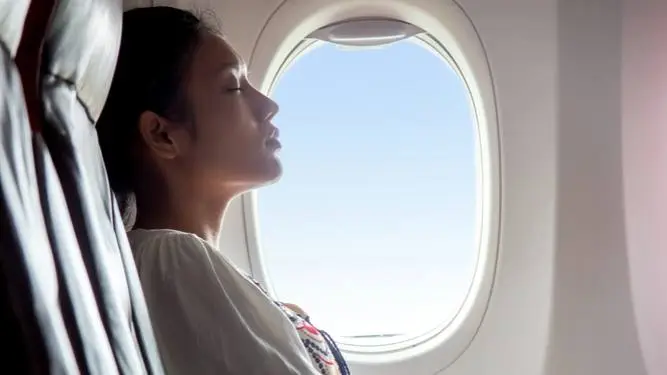Navigating the bothersome issue of ear pressure changes during air travel is a common concern for many passengers. Termed as “airplane ear,” this discomfort arises from an imbalance in air pressure between the airplane cabin and the middle ear. As the aircraft ascends or descends, the rapid change in altitude can lead to this condition, causing a sensation of fullness and discomfort in the ears.
Dr. Kimberly Lee, a board-certified plastic surgeon and assistant clinical professor, highlights the commonality of experiencing ear fullness during flights due to the alteration in air pressure. When the pressures inside and outside the eardrum differ, it mimics a suction cup effect, prompting the desire to pop the ears.
Fortunately, relieving this discomfort is typically a swift and painless process, with various expert-recommended techniques to keep the ears at ease during flights. Understanding why ears pop on airplanes is essential – it results from an incongruity in air pressure preventing the eardrum from vibrating normally. The Eustachian tube, responsible for regulating air pressure in the middle ear, struggles to keep pace with rapid pressure changes, leading to airplane ear or ear barotrauma.
Guide to Traveling in New Zealand
Several reasons may hinder the ability to pop ears, such as colds or allergies causing inflammation of the mucus membranes. Inflamed membranes can clog the Eustachian tube, resulting in pain during flights. While some advise against flying with a congested nose, practicality often dictates otherwise.
To address these challenges, there are effective ways to pop ears recommended by medical professionals:
1. Yawn or Talk to Activate the Eustachian Tube:
Opening and closing the mouth through yawning or talking helps equalize pressure, providing relief. Mimicking a wide stretch with a fake yawn can also be effective.
2. Chew Gum, Swallow Liquid, or Suck on Candy:
Chewing gum, especially mint gum, encourages extra saliva and swallowing, aiding in equalizing ear pressure. Sipping on water during takeoff and landing or sucking on candy also activates the muscles that open the Eustachian tube.
3. Use a Long-Acting Nasal Decongestant:
A long-acting nasal decongestant, such as 12-hour or 24-hour Sudafed or Afrin nasal spray, can offset swelling in nasal passages and assist the Eustachian tube. Applying the nasal spray 30 minutes before takeoff and descent helps optimize pressure equalization.
4. Try the Toynbee and Valsalva Maneuvers:
Pinching the nose shut while swallowing (Toynbee maneuver) or a breathing technique involving a deep breath, pinched nose, and gentle blowing (Valsalva maneuver) can effectively pop ears.
5. Stay Awake During Takeoff and Landing:
Staying awake ensures engagement in activities like yawning, swallowing, or chewing, facilitating natural ear popping.
6. Use Specially Designed Earplugs:
EarPlanes, designed to regulate ear pressure, offer a dual-purpose solution by aiding in comfort and preventing ear pressure discomfort.
7. Apply Heat to the Ear:
Post-flight, applying a heating pad or warm washcloth to the ear helps open up the Eustachian tubes, releasing built-up ear pressure.
8. Consider Pressure Equalization Tubes (Implants):
For persistent ear pain during flights, especially with Eustachian tube dysfunction, pressure equalization tubes implanted in the ears offer a potential solution. This minimally invasive procedure helps drain fluid and regulate pressure, lasting one to two years.
Addressing ear discomfort in children involves similar strategies, such as breastfeeding, using a pacifier, or employing specially designed earplugs for smaller ears. However, cautious consideration is advised for children with colds or ear infections, as their discomfort may be more pronounced.
Understanding these effective techniques ensures a more comfortable and enjoyable air travel experience, with the ability to manage and alleviate ear pressure concerns.






























